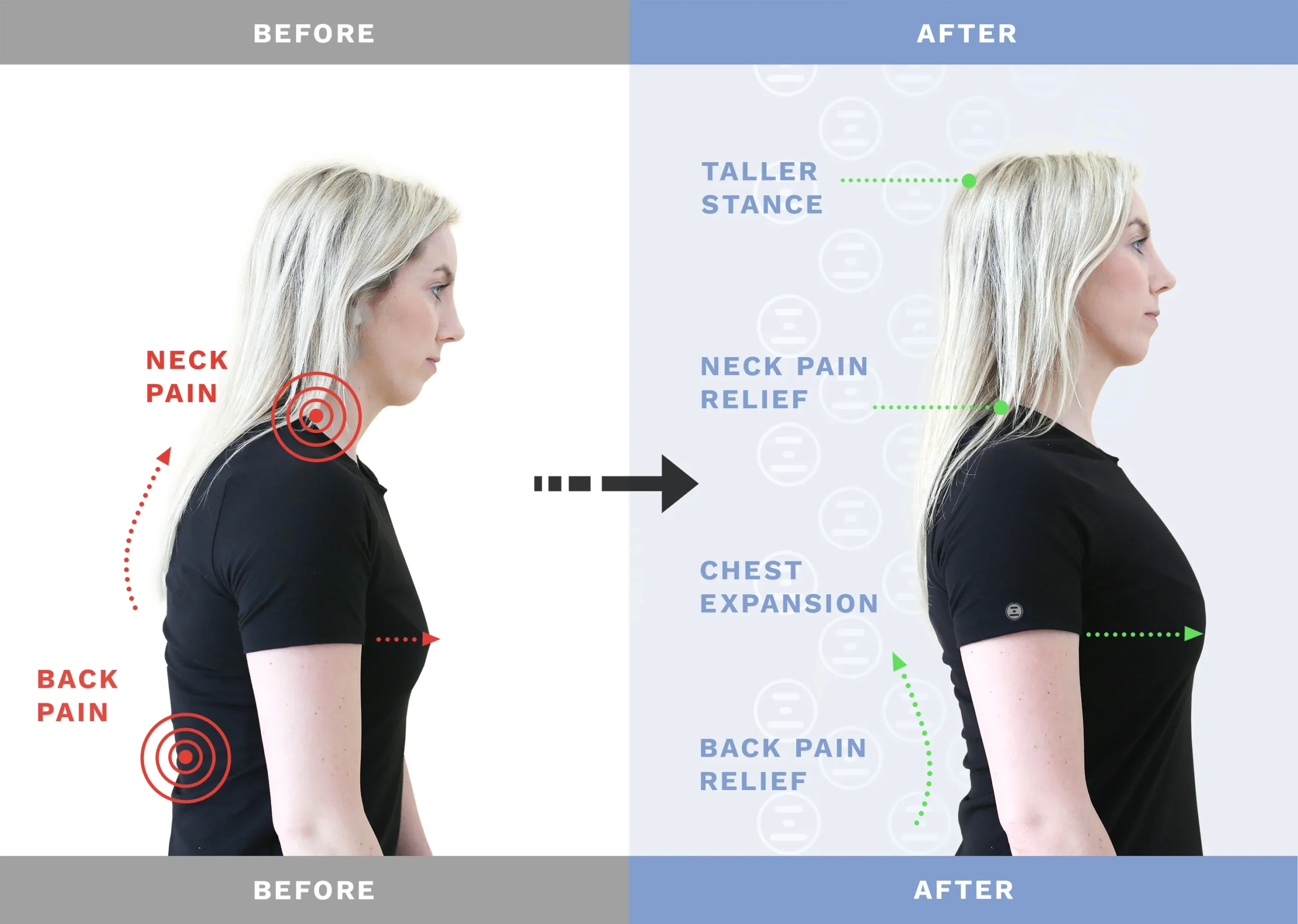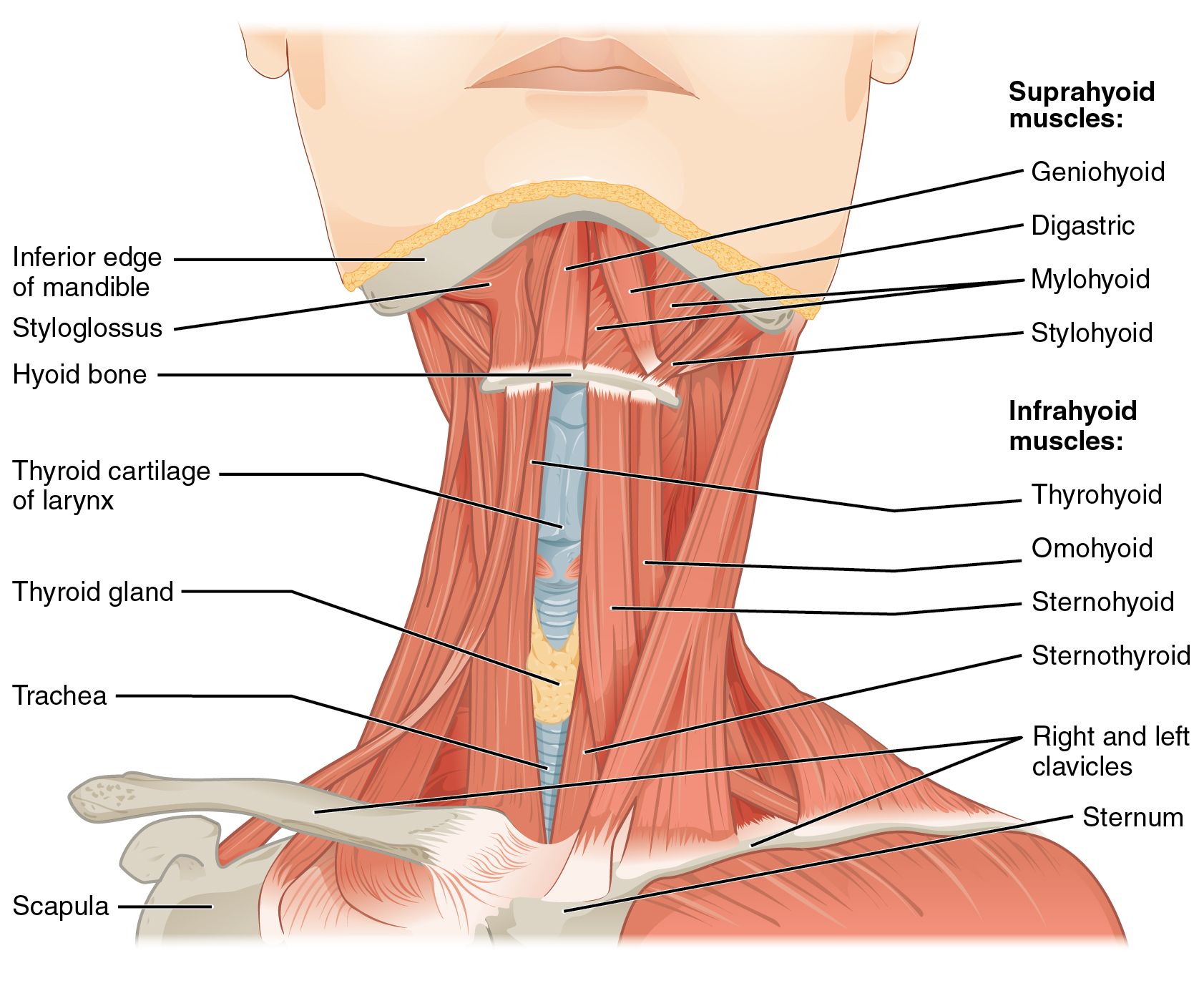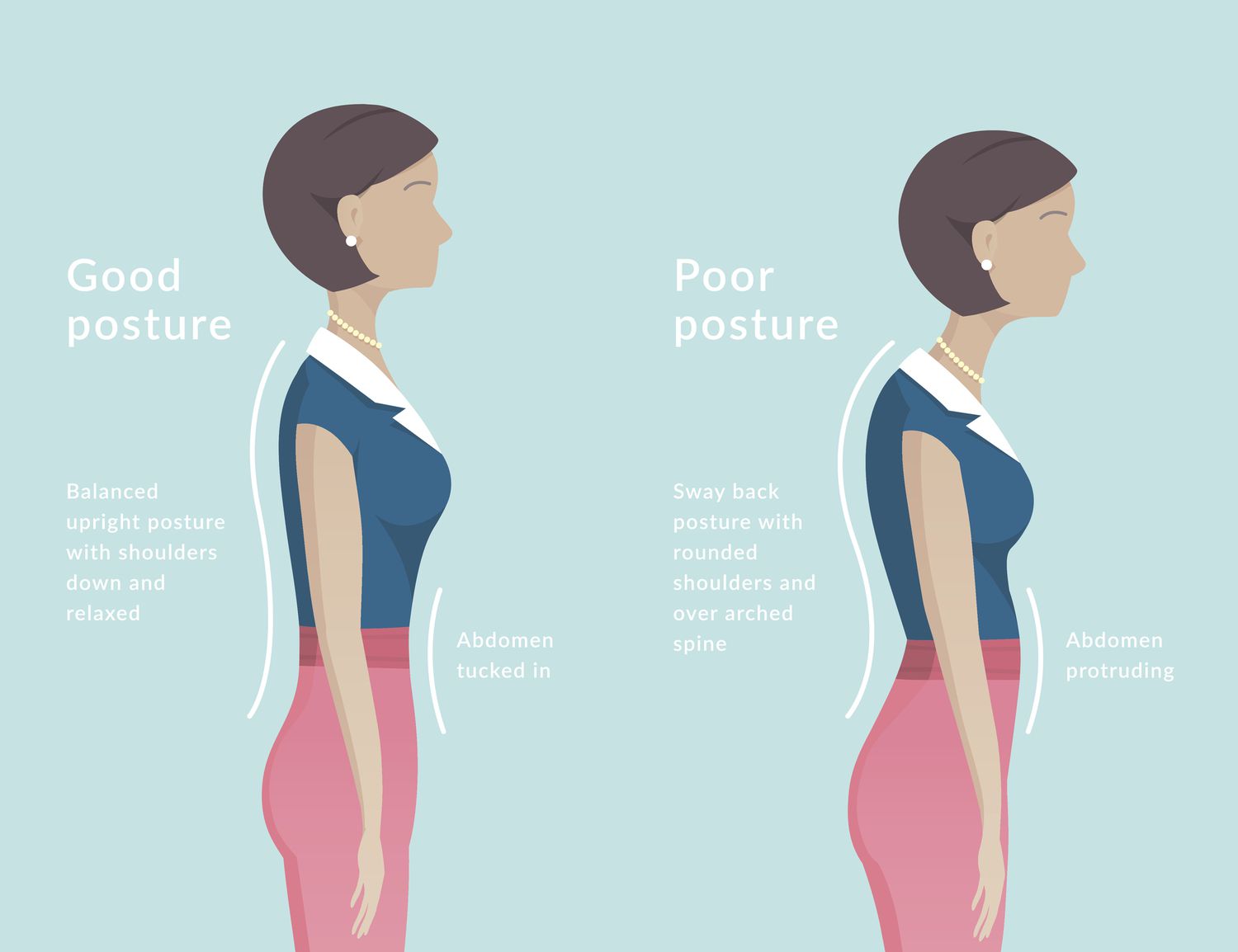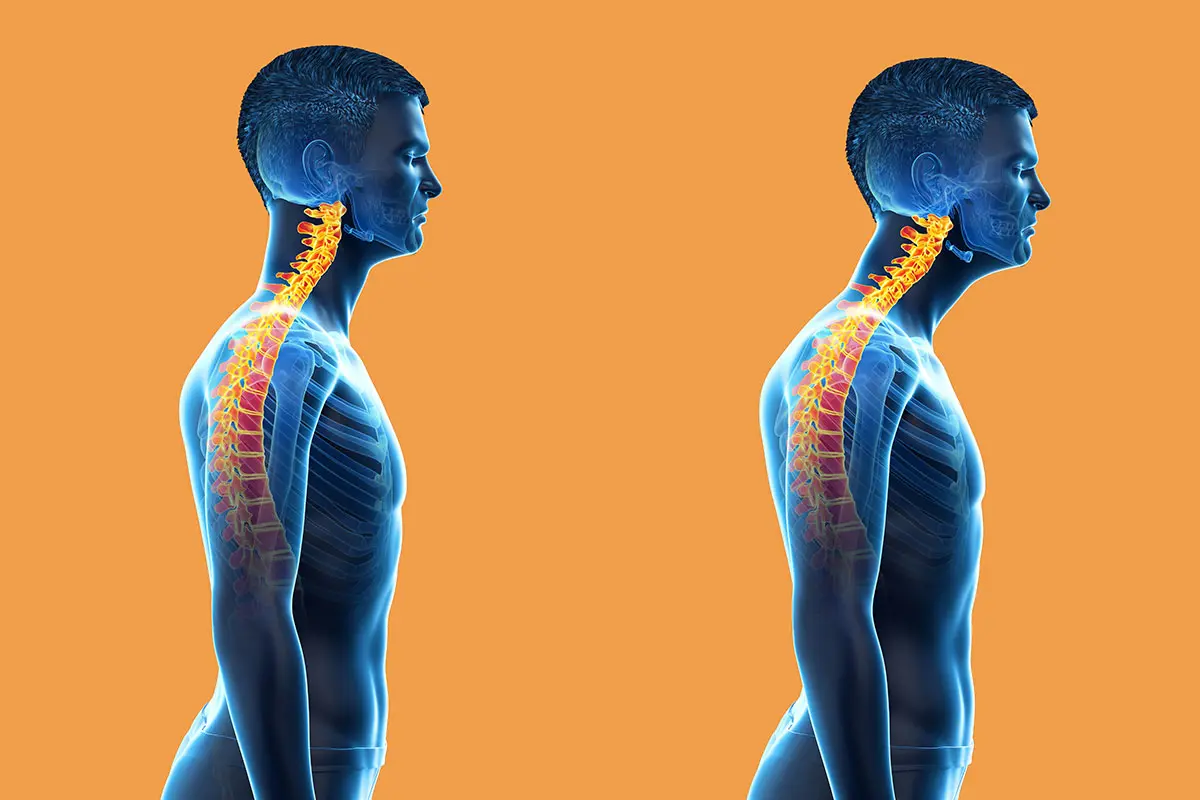Introduction to Neck Posture
Neck posture is the alignment and positioning of the neck in relation to the shoulders and spine. It’s pivotal for maintaining overall spine health and preventing conditions such as neck pain and shoulder issues.
Preserving good neck posture is critical. It not only helps in reducing the risk of developing painful conditions, but also contributes to better breathing, improved concentration, and enhanced physical performance. Moreover, a proper neck posture can have a significant impact on your overall core strength and balance.
This article provides a comprehensive exploration about the importance of neck posture, ways to maintain it, and the potential consequences of neglect.

Understanding the Anatomy of the Neck
The neck, a complex structure, is a marvel of engineering that supports the head and aids in its mobility. Comprised of bones, muscles, nerves, veins, and arteries, it’s essentially a conduit for vital pathways from the brain to the rest of the body.

How the Neck Supports the Head
The neck, specifically the seven cervical vertebrae, provides a supportive structure for the cranium. The top two vertebrae, known as the atlas and axis, form a pivot joint allowing the head to rotate and nod.
Role of Muscles and Vertebrae in Neck Movement
The neck’s flexibility and range of motion are largely attributed to its muscles and vertebrae. Sternocleidomastoid and trapezius muscles control lateral movement and rotation, while the small intrinsic muscles work together for fine motor control. The interplay of muscles and vertebrae allows for the neck’s varied movements, from nodding to rotation.
Common Posture Problems Affecting the Neck
Practicing good posture is integral to maintaining a healthy neck. However, several common posture problems can detrimentally impact the neck’s health.
- Forward Head Posture: This posture problem commonly occurs in individuals who spend long hours in front of a computer. It is characterized by the head protruding forward, unnaturally extending the neck and spine. Studies have linked this posture to neck pain and impaired breathing.
- Rounded Shoulders: This is a common problem caused by sitting for extended periods, especially while using a computer or smartphone. It can lead to tight chest muscles and weak upper back muscles, causing neck strain.
- Hunchback: Also known as Kyphosis, this condition is characterized by an excessive curvature of the upper back, leading to neck pain and stiffness. More details here.
- Text Neck Syndrome: This is a modern condition caused by looking down at a mobile device for extended periods, leading to neck pain and headaches. Find out more.

Impact of Poor Neck Posture on Health
Poor neck posture can have significant impacts on your health. One immediate consequence is pain and discomfort. This can manifest as a constant ache or sharp, shooting pains, leading to a decrease in quality of life.
Beyond immediate discomfort, persistent poor neck posture can lead to chronic conditions. These include degenerative disc disease, osteoarthritis, and herniated discs.
Interestingly, there’s also a connection between neck posture and mental health. Studies have found that chronic neck pain can contribute to anxiety and depression, creating a vicious cycle of physical and mental discomfort.
Lastly, your neck posture can significantly affect your overall body posture. A forward head posture can lead to rounded shoulders and a hunched back, causing a ripple effect of musculoskeletal issues throughout your body.

In conclusion, maintaining a good neck posture is not just about avoiding neck pain—it’s a critical aspect of overall health and wellbeing.
Identifying Incorrect Neck Posture
Incorrect neck posture, often a result of prolonged device use or poor ergonomic habits, can lead to a myriad of health issues. Common symptoms include chronic neck and shoulder pain, headaches, and even numbness in the arms or hands. These discomforts are your body’s way of warning you about potential postural problems. [source]
Self-Assessing Your Neck Posture
You can perform a quick self-assessment of your neck posture. Stand against a wall with your heels, buttocks, and back of your head touching it. If your neck is not touching the wall, it indicates a forward head posture, signaling potential neck problems. [source]
When to Seek Professional Help
If symptoms persist despite your efforts to improve your posture, it may be time to seek help from a professional, such as a physical therapist or chiropractor. They can provide a comprehensive assessment and create a tailored treatment plan that includes exercises and stretches to correct your posture. [source]
Strategies for Improving Neck Posture
Proper neck posture is a crucial element of overall health, contributing to reduced muscle strain and prevention of conditions like neck pain. Fortunately, several effective strategies can aid in improving neck posture.
Regular exercises and stretches
Practicing regular exercises and stretches can significantly enhance neck posture. These maneuvers work to strengthen muscles and improve flexibility, promoting healthier alignment.

Breaks from Sedentary Activities
Given the sedentary nature of many modern jobs, it’s essential to take regular breaks from tasks that demand prolonged sitting or screen time. These breaks can prevent muscle strain and promote better neck posture.
Ergonomics and Neck Posture
Finally, the role of ergonomics shouldn’t be underestimated. Utilizing ergonomically designed furniture and equipment can substantially ease the strain on your neck, leading to improved posture.
Role of Physiotherapy in Correcting Neck Posture
Physiotherapy plays a vital role in correcting neck posture, addressing issues like neck pain, stiffness, and reduced mobility often associated with poor posture. Research indicates that physiotherapy can lead to significant improvements in neck posture by strengthening the neck muscles and improving flexibility.
Various physiotherapy techniques can be utilized for this purpose.
- Manual Therapy: This technique involves the physiotherapist using their hands to relieve muscle tension and improve mobility.
- Therapeutic Exercises: These are specific exercises designed to strengthen the neck muscles and improve posture.
- Ergonomic Advice: Physiotherapists provide advice on optimal workstation setups and daily living activities to support good neck posture.
In conclusion, physiotherapy is a holistic approach that promotes optimal neck posture, reducing the risk of related health issues. For more comprehensive treatment, it can be combined with other interventions, such as ergonomic adjustments and lifestyle changes.
Conclusion: The Long-Term Benefits of Good Neck Posture
Indeed, the importance of good neck posture cannot be overstated. It is the bedrock of optimal neck health and an essential aspect of overall wellbeing. Poor neck posture can trigger a domino effect of health issues, from chronic pain to compromised breathing and digestion.
As we bid adieu to this enlightening journey, it’s paramount to emphasize your role in safeguarding your neck health. Actively prioritizing neck posture in your daily routine can significantly curb the risk of developing long-term complications. Simple acts such as adjusting your workstation, practicing regular stretches, and mindful habits like yoga can be instrumental in maintaining good neck posture.
In conclusion, remember that good neck posture is not just about standing tall – it’s a lifelong commitment to health. So, don’t just read this – live it. Your neck, and indeed, your entire body will thank you.
Conclusion: The Long-Term Benefits of Good Neck Posture
Indeed, the importance of good neck posture cannot be overstated. It is the bedrock of optimal neck health and an essential aspect of overall wellbeing. Poor neck posture can trigger a domino effect of health issues, from chronic pain to compromised breathing and digestion.
As we bid adieu to this enlightening journey, it’s paramount to emphasize your role in safeguarding your neck health. Actively prioritizing neck posture in your daily routine can significantly curb the risk of developing long-term complications. Simple acts such as adjusting your workstation, practicing regular stretches, and mindful habits like yoga can be instrumental in maintaining good neck posture.
In conclusion, remember that good neck posture is not just about standing tall – it’s a lifelong commitment to health. So, don’t just read this – live it. Your neck, and indeed, your entire body will thank you.
.

Dr. Martha Pyron is a recognized sports medicine physician and the founder of Medicine in Motion, an Austin-based practice specializing in comprehensive medical care for active individuals and athletes. An active contributor to her field, she uses her extensive experience as a former collegiate athlete to aid her patients and develop innovative care strategies. Beyond her clinical practice, Dr. Pyron is known for her involvement in the local athletic community and her commitment to promoting health and fitness.



